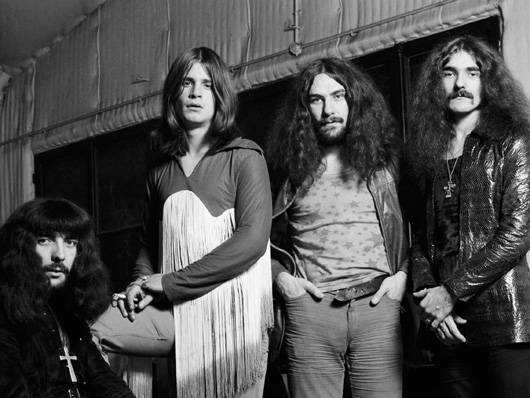
From Earth to Heaven... and Hell
The original line-up of Black Sabbath - singer Ozzy Osbourne, guitarist Tony Iommi, bassist Geezer Butler and drummer Bill Ward - has officially reformed. Or have they?
Either way, metal owes Black Sabbath a huge debt. They were true pioneers that emerged from the poverty of Aston, Birmingham in the 1960s to bring a brand of blues so heavy a whole new name would have to be invented for it.
Some claim to have got there first but when that doom-sodden riff kicked off the unholy trinity of song, album and band Black Sabbath, the world knew that the spirit of heavy metal had truly arrived.
It was the beginning of an incredible career that's still playing out, but there's a great deal more to Sabbath's rollercoaster story than Ozzy, Iron Man and Paranoid...
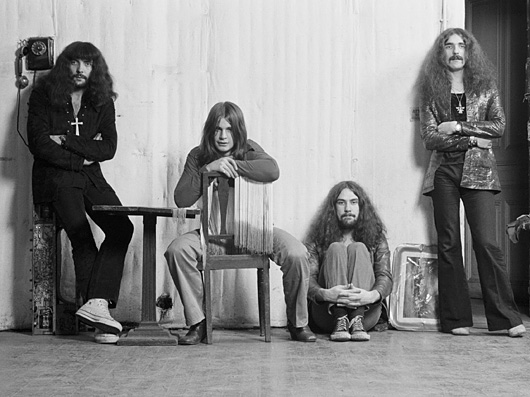
Polka powder power
While Sabbath never went through Iron Maiden-esque levels of personnel turnover before they settled on the classic lineup, they did go under two different band names between 1968-69.
They were briefly The Polka Tulk Blues Band (named after Ozzy's mum's budget brand of talcum powder - not very metal) with a slide guitarist and saxophonist in tow. After slimming down to a four-piece, they recorded a number of demos under the name Earth including Rebel Song.
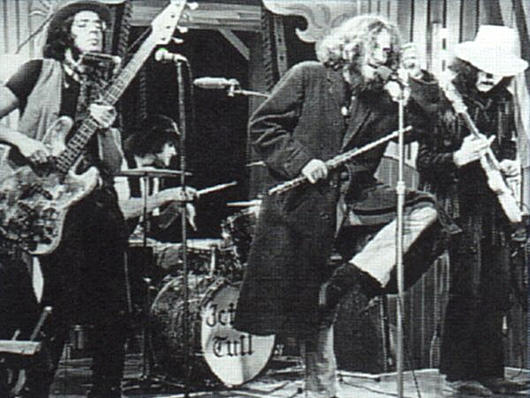
Never say Tull
With the line-up of Osbourne/Iommi/Butler/Ward together the forces of darkness were all in place and the rest is metal history, right? It very nearly wasn't.
For a couple of weeks in 1968 Iommi jumped the Earth ship for London to join flute-fixated folksters Jethro Tull. He even appeared with them in The Rolling Stones Rock And Roll Circus, looking like a doppelganger Ritchie Blackmore complete with a white Strat and a matching hat.
Not a bad little holiday in the capital, but thankfully he saw sense and rediscovered the dark side, returning to Brum with renewed determination to make a success of Earth.

The sign of the cross
The band eventually jettisoned the name Earth in favour of the title of a 1963 horror film starring Boris Karloff. In turn, Sabbath soon became synonymous with the crucifix, with an inverted cross appearing inside the sleeve of their self-titled first album.
In addition, all four members began wearing large aluminium crosses around their necks made by Ozzy's dad. This wasn't a fashion statement, and contrary to any accusations that they were dealing in black magic, the opposite was true - they were fending off a witch's spell.
The band asked were asked to play a gig at Stonehenge celebrating the Witches' Sabbath. They refused and 'King Of The Witches' Alex Sanders placed a hex on them. The crosses were Sabbath's way of protecting themselves, but the crucifix connection has lasted to this day. Iommi still wears one onstage and they often appear on the band's merchandise.
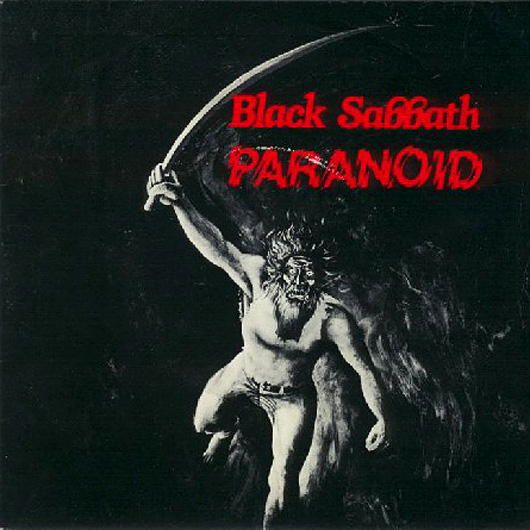
A productive lunch hour
Despite being Sabbath's most well-known song, Paranoid was something of a 30-minute miracle.
After initial sessions at Regent Sound in London for the album (the same studios in which the band recorded their debut) in 1970, the band moved on to Island Studios and it was during a lunch break there that Tony Iommi stayed behind to write the music that would become the band's calling card.
"He was just playing it on his own in the studio," Bill Ward told Joel McIver in an interview for his book, Sabbath Bloody Sabbath. "Geezer plugged in his bass, I sat behind my drum kit, we automatically grooved with him and Ozzy started singing. We didn't say a word to each other; we just came into the room and started playing. I think it was about 1:30 in the afternoon; Tony had the riffs, and by 2:00pm we had Paranoid exactly as you hear it on the record."
Paranoid's impact was so immediate, the band's record label Vertigo insisted that they name their second album after it, rather than War Pigs as they had planned, hence the shot of a slightly camp pink pig man with a sword on the album cover. It's a monochrome illustration on the single (above).
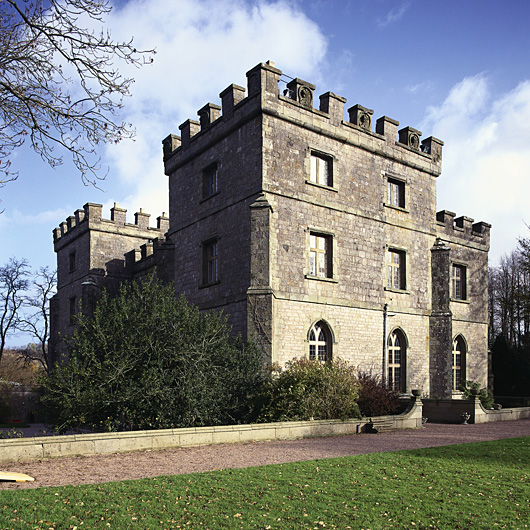
Spiritual architects
After the tour-de-force duo of 1971's Master Of Reality and 1972's Vol 4, Sabbath hit a wall of writer's block for the follow-up a year later.
They decamped to Clearwell Castle in the Forest Of Dean in search of inspiration - a mock gothic mansion that would later also be used by the likes of Deep Purple and Led Zeppelin for writing and rehearsal.
With Sabbath set up in the dungeons, inspiration flowed into lush instrumentation and progressive territory. The album they wrote - Sabbath Bloody Sabbath - is the closest thing to their Sgt Pepper. Just ask Tom Morello and Billy Corgan about its enduring influence.
However, they had an unwelcome visitor during their time at Clearwell, as Iommi explained to Guitarist magazine in 2009:
"A cloaked figure [was] coming towards us in the hallway. We were setting up the gear in the dungeons and we were the only people there. It was myself and Geezer... or myself and Ozzy, we were walking down the hallway and we saw somebody coming towards us, we thought, 'Who is that?'
"It walked into this room and we followed it to see who it was and there was nobody there. It was an armoury with all the weapons on the wall and there was nothing else in there. We told the people about it who owned the castle, we thought they'd think we were mad. But they just said, 'Oh yes, that's the castle ghost'."
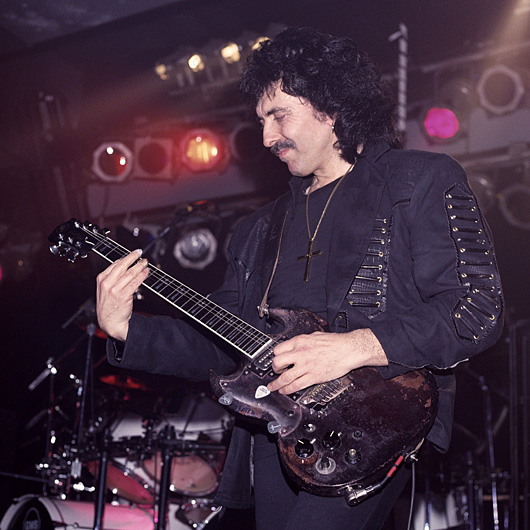
Fretting about things
Although it has devil-horned charms of its own, two men can take responsibility for making the Gibson SG one of the world's most desirable rock guitars; AC/DC's Angus Young and a certain Mr Frank Anthony Iommi.
Although he would go on to be honoured with black Gibson and Epiphone signature models (with crucifix fretboard inlays, naturally) Iommi's two longest-serving axes weren't actually made by Gibson at all. This is because back in the 1970s the guitarist couldn't get any of the big guitar companies to make him a 24-fret guitar with the high output pickups he wanted.
His first custom SG shape was made by John Birch (who also built Brian May's Yellow Special) and was his main guitar between the Technical Ecstasy and Mob Rules albums. Iommi began using another SG-shape guitar called The Old Boy around the Heaven And Hell era, it was made by Birmingham luthier - and former colleague of Birch - John Diggins.
The heavily distressed look of The Old Boy is the result of it being left in a hot car on the Brazilian leg of the 1994 Cross Purposes tour which resulted in the finish bubbling and cracking.
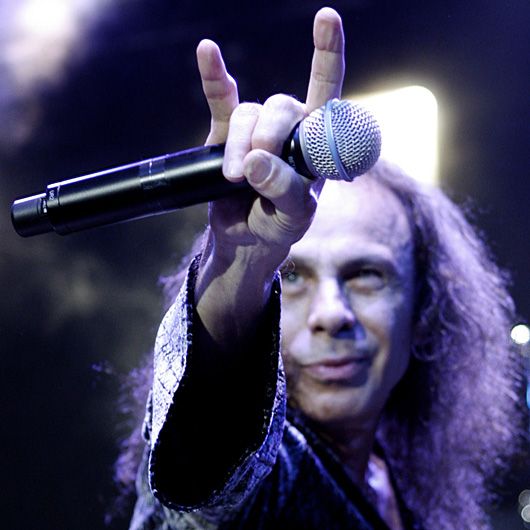
Neon knights ride out
After The Never Say Die album and the band's tenth anniversary the following year, Ozzy was fired due to substance abuse - deemed excessive even by Sabbath standards at the time.
As luck would have it, Ronnie James Dio was looking for a new band after Ritchie Blackmore decided to steer Rainbow into commercial waters, and deemed Ronnie's love of sword and sorcery-themed lyrics surplus to requirements.
The diminutive singer's first jam with Sabbath went very well indeed, spawning the song Children Of The Sea that would become a favourite on the first album they would make, 1980's Heaven And Hell.
A departure of sorts for Sabbath, the album regained the ground lost on the lacklustre Never Say Die. Dio's powerful and theatrical voice inspired Iommi to write a record of frequently upbeat songs like Wishing Well and Walk Away, balanced by the epic title track and Children Of The Sea.
It was the beginning of a fiery, on-off relationship between the egos of singer and band that would take years - and two reunions - to stabilise.
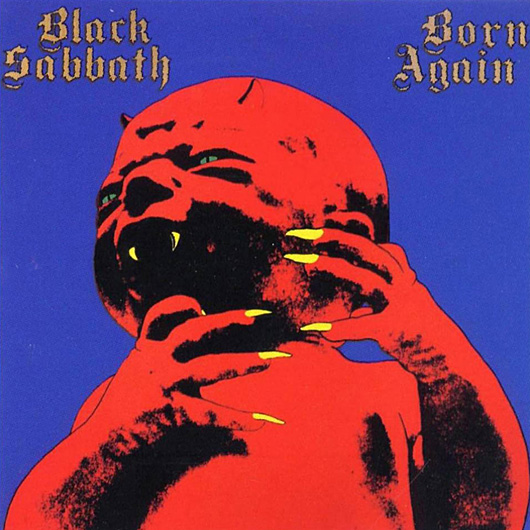
Deep Sabbath in rock
Following the departure of Vinny Appice and Ronnie James Dio in 1982 to form their own band (Dio), Geezer Butler and Tony Iommi found themselves at a dead end. Who better to bail them out than the frontman of an equally legendary band - Deep Purple's Ian Gillan.
After a night of drinking together, Gillan agreed to work with them on the Born Again album. Bill Ward returned to play on it too but was unable to tour due to his ongoing battle with the bottle. The resulting album was only released under the Sabbath name after record company pressure and is a metal Marmite release for fans - it also marked the beginning of Sabbath's dark age of revolving lineups.
But it wasn't all bad news, the Born Again tour gave birth to the notorious Stonehenge incident. In a genuine coincidence - Christopher Guest and co. had already included the 'henge idea in a 1982 pilot - what happened to Sabbath was very similar to a scene in 1984 mockumentary, This Is Spinal Tap
While the movie featured a mix up between feet and inches resulting in a hilariously small Stonehenge stage-set, Sabbath's set was too big due to a mix up between meters and feet. The 45-foot high stones were too large to fit into venues on the tour.
Why did Sabbath want a Stonehenge stage-set in the first place? Because of the song of the same name on Born Again.
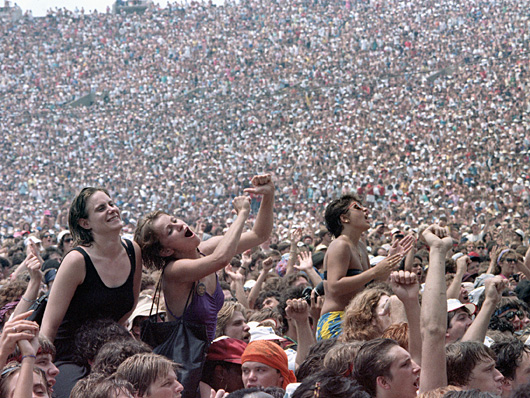
Live Aid evil
The reunion that few were expecting came in 1985 with Ozzy, looking alarmingly like Pat Butcher, briefly back on stage with his Aston friends for the Philadelphia leg of Live Aid.
Like all the other acts at the JFK Stadium that day, Sabbath only got 15 minutes to play, and burned through crowd-pleasers Iron Man and Paranoid. Plans were afoot behind the scenes to make the reunion long-term but legal issues between Sabbath manager Don Arden and his daughter, and Ozzy's manager, Sharon Osbourne became insurmountable.
It was back to the drawing board for Tony Iommi as he mulled over the future of Sabbath sans Ozzy or Ronnie. It would be 12 years before the famous four would play together again.
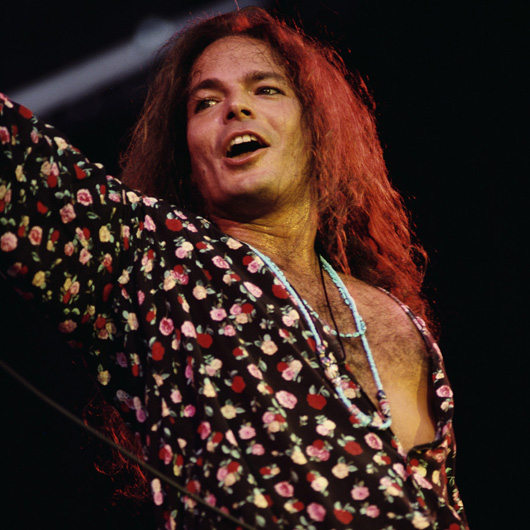
We're going through changes
The eighties were a confusing time if you were a Black Sabbath fan. Between 1982 and 1990, Black Sabbath would be fronted by six different singers... in some shape or form.
The likes of David Donato and Jeff Fenholt never got past the demo and rehearsal stage. Disillusioned and abandoned by Geezer and Ward, Tony Iommi recorded a solo album with another Deep Purple man on vocals, this time Glenn Hughes.
However, record company pressure again resulted in their 1986 album, Seventh Star, being released under the Sabbath name, despite its very un-metal AOR leanings. Then Hughes got injured in a fight and the late US singer Ray Gillen had to step in.
Gillen ended up recording The Eternal Idol with the 'band' (Iommi now the only original member) but he quit before it was released. His original vocal versions survive on the bootleg circuit but the final LP release would feature British singer Tony Martin.
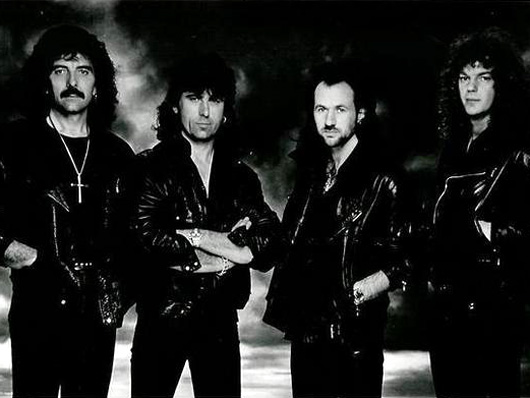
The illusion of Sabbath
"I think Headless Cross, the later album we did with Tony Martin, was a good one. It did well in Germany but as far as promotion in America, the record company didn't get it in the shops or anything."
Tony Iommi isn't alone. A fair few Sabbath fans regard the much-maligned Tony Martin era as underappreciated. Others, but evidently not the Germans, can't bear to think of it as Sabbath at all.
Nevertheless, with Ozzy enjoying solo success in the late 1980s, Iommi soldiered on with the Sabbath name (without either Ward or Butler) for five albums with Martin. He fronted Sabbath for two spells, interrupted by a second reunion with Dio in 1990.
While Iommi notes Headless Cross as the strongest Martin-era Sabbath album, he has no doubt about the worst. "There's a couple I don't like, Forbidden being the main one. The way we brought in Ernie C to do it was another idea from the record company at the time."
Indeed, the decision to recruit the guitarist from Ice T's Bodycount as producer was folly, and a possible attempt to appear 'current' in 1995. Ice T even features on the opening track The Illusion Of Power. We can only be thankful that Iommi make sure this wasn't the last 'Sabbath' studio album when he put things right in 2009.
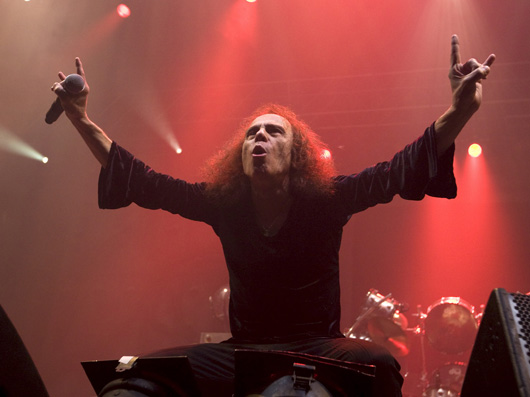
Ronnie returns
Good things never last and Sabbath's first reconciliation with Dio was one of them.
But Iommi, Butler and Mob Rules-era drummer Vinny Appice's 1990 reunion with the mighty D eventually spawned a gem of an album with 1992's Dehumanizer. A significant return to form for Iommi after a shaky late eighties, it's markedly aggressive, and one of Sabbath's heaviest - just take a listen to After All (The Dead).
While Sabbath's commercial and critical stock rose with Dehumanizer, Iommi put the cat amongst the pigeons when he suggested the band capitalise on demand by supporting Ozzy Osbourne for two shows in Costa Mesa, California at the end of his 1992 tour.
This was a slight too far for Dio, who promptly quit. The band played on with none other than Rob Halford of Judas Priest filling in for a Birmingham metal all-star event.
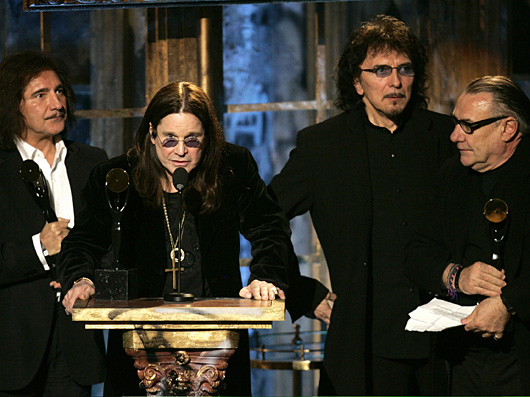
The Ozzman cometh
In 1997 it finally came - the reunion of the original four members of Black Sabbath.
Under the guidance of wife/linchpin Sharon, Ozzy had already established a successful touring festival - Ozzfest - that Sabbath joined as headliners that year with a set of their best known songs (with Ozzy doing double duty supporting with a solo set). And so it went for the next few years, The original Sabbath playing Ozzfests and the occasional headline show, including a December 1998 Last Supper farewell gig at the Birmingham NEC that turned out to be nothing of the sort.
But although they recorded a new song, Psycho Man, for 1998's Reunion live album and played another new song live in 2001 - Bill Ward's funeral march Scary Dreams - a new studio album was not forthcoming. A writing session in mid 2001 with Rick Rubin was abandoned.
"I could go in the studio and write a bunch of stuff," Ozzy told Billboard. "But why do an album just for the sake of Bill, Tony, me and Butler together playing if it's not up to the Black Sabbath standard that I left?
"It would fuck it up, you know? It's so sad when you hear these monumental bands do these piece of shit records just because they want the money."
With Sabbath limited to occasional live duty, Ozzy became a star for other reasons in 2002 with The Osbournes TV show and continued with his solo career. Despite a long overdue Rock And Roll Hall Of Fame Induction in 2006 by an emotional and reverential James Hetfield, Sabbath seemed to have become a side issue for the Prince Of Darkness.
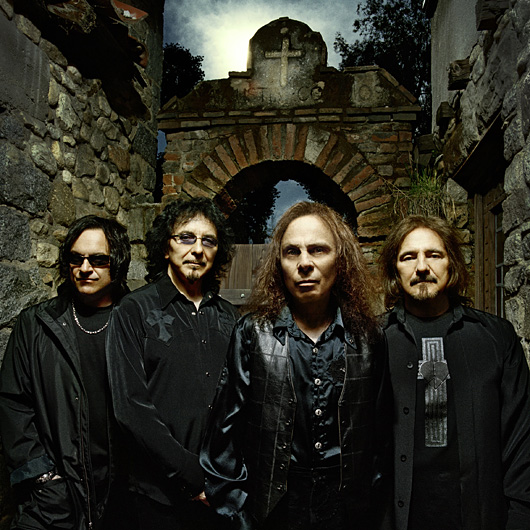
Heaven & Hell
By 2007, the original Black Sabbath were in limbo. Iommi and Butler decided to move things forward with Ronnie James Dio, recording three new songs for a greatest hits compilation of Dio-era Sabbath material.
The tracks proved two things: Iommi was still an unsurpassable riff writer, capable of crushing any young metal pups with his heaviness. Secondly, a reunion with Dio now made perfect sense. Except it wouldn't be Sabbath - to avoid confusion with the Ozzy-fronted incarnation of the band, the reunion with Dio would be named after their first album together: Heaven And Hell. Though it would be without Bill Ward, who declined to take part, so Vinny Appice returned to the drum stool.
"With Ronnie we scrutinise the music a lot more," Iommi told Guitarist magazine in 2009, "Because Ronnie has a lot of ideas. I'll come up with initial riff then he might suggest changing it a little and going to this bit. We pull the music apart more. It's good because he might hear something different to me - then I can say, Oh that's good or it's not. It works."
With the resulting international Heaven & Hell tours going down a storm, an album followed. 2009's doomy Devil You Know was a victory, the finest 'Sabbath' album since Dehumanizer with its centrepiece Bible Black proving that qualifying for a bus pass hasn't diminished the heaviness of a re-inspired Sabbath one iota.
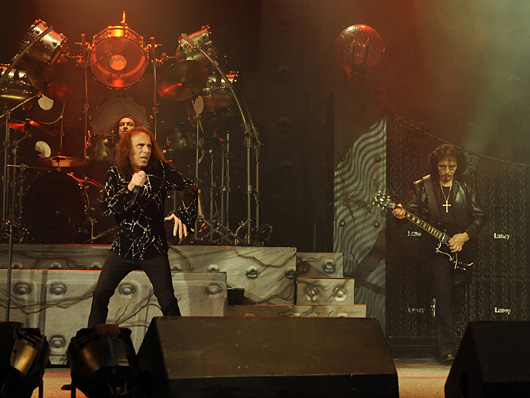
The End of the Road?
Dark clouds are never far away from Sabbath. The return of Heaven & Hell would be overshadowed by the news in November 2009 that Ronnie James Dio had been diagnosed with stomach cancer. He passed away in May 2010 aged 67.
With legal issues over the Black Sabbath name unresolved at that time, it appeared that it was the end of the road. Then the news leaked in August 2011 that the classic line-up might have reunited oncemore...
Want more? Check out Total Guitar's Iommi avalanche - Iommi interviews, influences, tips and more here

Rob is the Reviews Editor for GuitarWorld.com and MusicRadar guitars, so spends most of his waking hours (and beyond) thinking about and trying the latest gear while making sure our reviews team is giving you thorough and honest tests of it. He's worked for guitar mags and sites as a writer and editor for nearly 20 years but still winces at the thought of restringing anything with a Floyd Rose.
“KIKI BOY 2025”: Frank Ocean appears to be teasing something... or other
“Not quite my cup of tea… I feel like I’d hear this on iHeartRadio or something”: Bon Iver’s Justin Vernon takes to the streets of New York to play people his new album… and nobody knows who he is
“KIKI BOY 2025”: Frank Ocean appears to be teasing something... or other
“Not quite my cup of tea… I feel like I’d hear this on iHeartRadio or something”: Bon Iver’s Justin Vernon takes to the streets of New York to play people his new album… and nobody knows who he is









